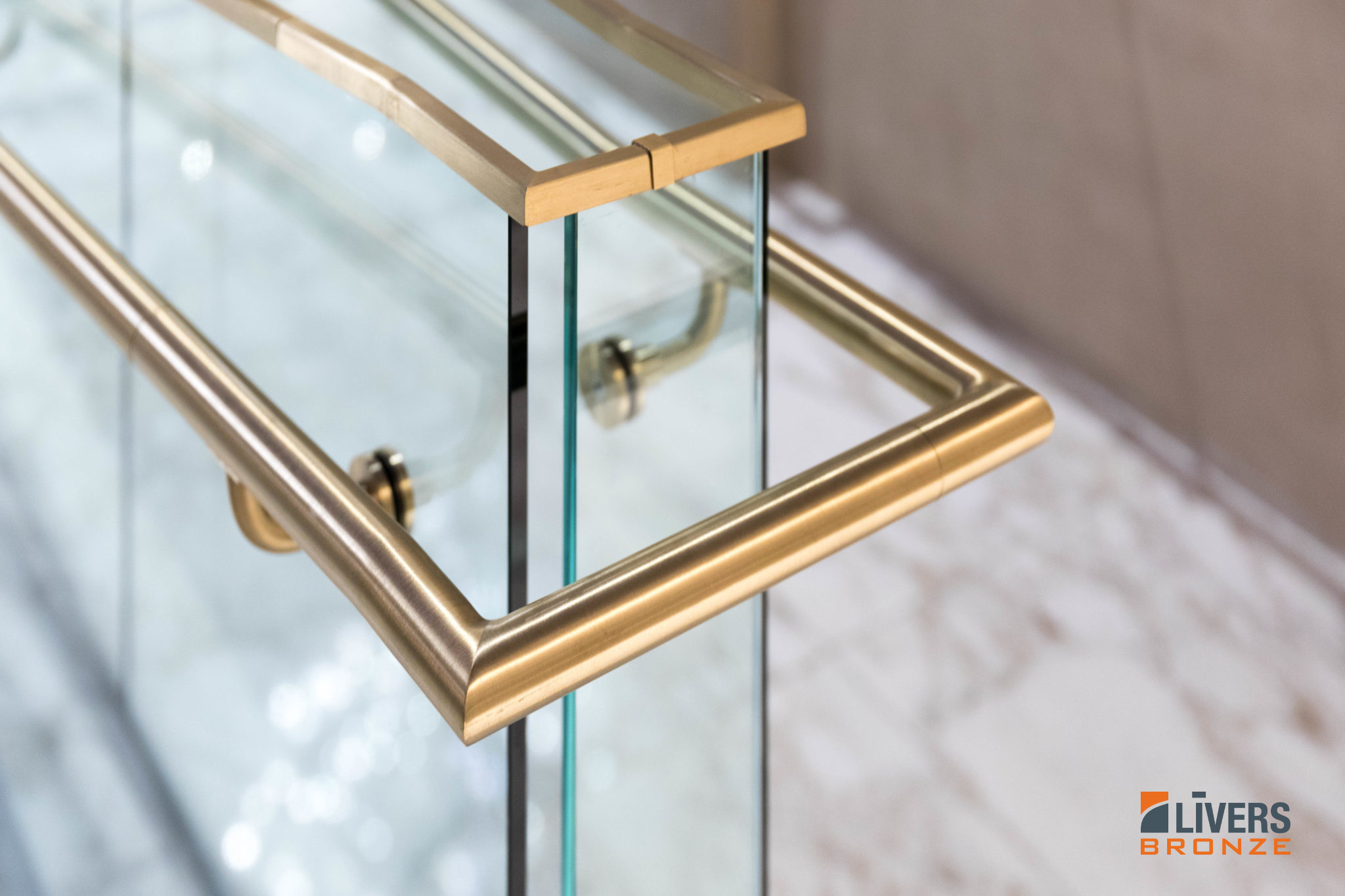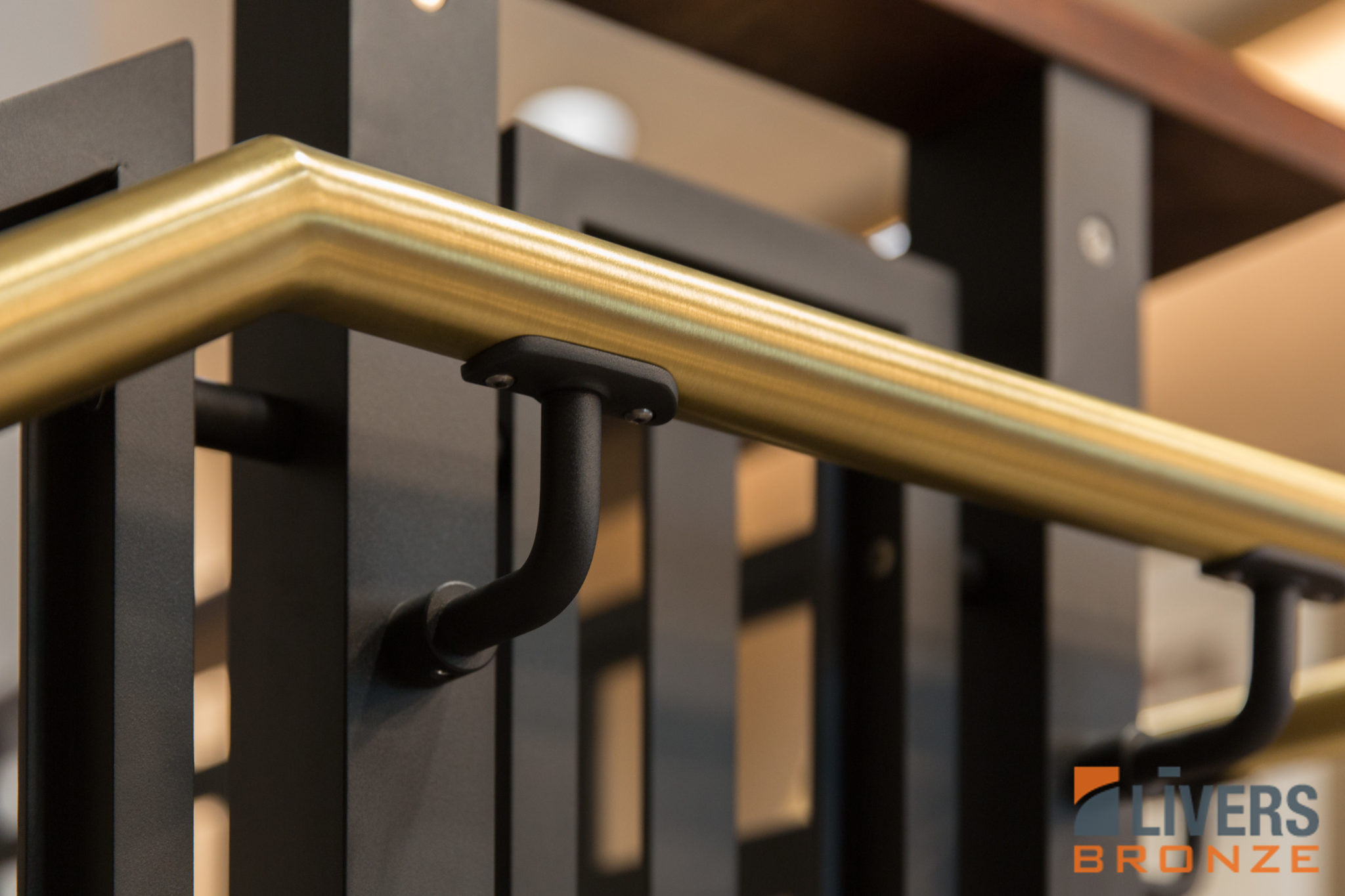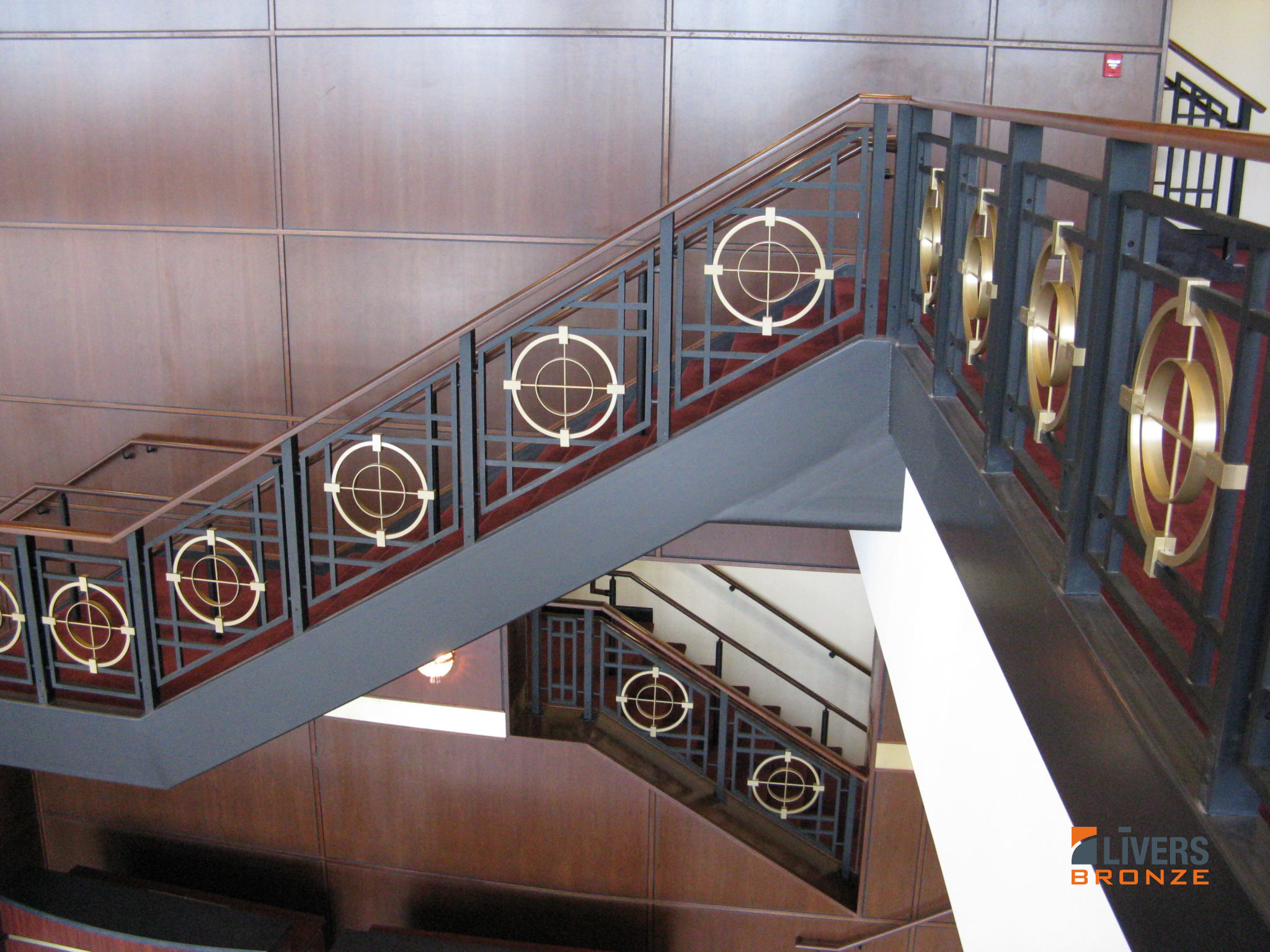Bronze Handrail Design Requires Extensive Experience
There are many different “bronzes” – various alloys for different architectural applications. So, the term “bronze” is sometimes misleading as you might be receiving a brass alloy. To avoid confusion and deliver handrailings that live up to your expectations, we use the term bronze in general for the color.
With bronze, it is critical to specify a fabricator, like Livers Bronze that has experience with choosing the proper alloy to use and how to fabricate and finish it. Only experience can guide the design of the final product from the structural standpoint. Alloy selection is critical since bronze alloys can appear to be different colors when used together.
Some of the most common bronze finishes are:
Satin – Brushed Finishes
- Applied to flat bars, tubes, angles and sheet metal as a straight grain finish and are generally a bright grained finish (#4).
- Applied to round tubes as a circular grained finish.
- Once finish is applied, a clear lacquer coating keeps it from tarnishing.
- A lacquer coated bronze finish will tarnish over time and may require upkeep to retain brightness.
- UV from sunlight causes tarnish as lacquer coatings tend to degrade.
- Considered an alternative finish such as an oxidized finish for exterior bronze railings.
Polished Finishes
- Achieved by finishing the bronze material in subsequent finer grits followed by a buffing process to produce a reflective finish on the material.
- A lacquer coating is required over the polished finish in order to maintain the factory finish.
Blasted Finishes
- Produced by the impact of a hard, inert medium onto the bronze resulting in a non-directional, uniform matt surface with low reflectivity.
- A lacquer coating is required over the bead blasted finish in order to maintain the factory finish.
Oxidized Finishes
- A patina-type finish also known as Statuary Finish, Oil Rubbed Bronze, US10B to name a few, yet name doesn't describe the final finish.
- Chemicals that are applied to the bronze material to physically change the color of the metal – these can vary from light to very dark and everything in between.
- Hand applied and difficult to control from piece to piece so variations in color can be expected and are part of the process.
- An experienced fabricator can lead you through the process and provide a range control samples in order to establish a baseline for the final finish color.




